// HOME
Religion in Dolmenwood

- Pluritine Church
- The dominant religion in Dolmenwood, sanctioned as the official religion of the Duchy of Brackenwold. Most humans in Dolmenwood are adherents of the Church, to one degree or another.
- Deities: A nameless, male god, only referred to by the epithet “the One True God.” God’s true name is regarded as ineffable. Daily practice focuses on venerating the host of saints—exalted people who performed mighty and miraculous deeds in the service of the Church, now said to act as intermediaries between mortals and God.
- Origin: The Pluritine Church originated 1,600 years ago, in a land far from Dolmenwood, when the five prophets (Ogrimund,Hogrish, Elidine, Lacrimyde, and These) received a vision of the cosmos and the struggle of all living beings. The prophets travelled the world to spread word of their vision—that the gods of all religions are falsely named aspects of One True God, who should not be named or depicted. After 17 years of proselytising, the prophets ascended to heaven without knowing mortal death.
- Cosmology: The Church teaches that God created the mortal world, the paradisical realm of heaven, and the accursed realm of hell. He populated the mortal world with humans, other mortal Kindreds, and animals. He created angels to serve Him in heaven and devils to torment the damned in hell. Lastly, God created the world of Fairy to demonstrate the folly of life without faith and salvation.
- Tenets: Depiction or naming of God is heresy. Sentient life is sacred and must be protected and nurtured. Evil deeds are to be punished, but free will is fundamental. Each individual must be free to choose a life of evil (and eternal damnation in hell) or good (and eternal reward in heaven).
- Practices: Daily prayer to a patron saint. Weekly visits to church for communal prayer (traditionally on Sunning). Pilgrimage to cathedrals or holy sites.
- Holy Symbols: A circle with five rays descending from it, representing God and the five prophets. This symbol is known as the Chapes. Symbols of the three clerical orders and effigies of individual saints are also common.
- Holy Texts: The most holy text—known as the Pragmaphon recounts the visions, lives, and apocalyptic prophecies of the five prophets. Lesser bodies of text also exist around most of the saints, recounting their deeds and teachings.
- Membership: The Church has a strict hierarchy of priesthood see Pluritine Church Hierarchy. Clerics and friars serve the Church in wild and dangerous lands.
- Relationships: While all Kindreds are welcomed into the faith, most adherents and officials are humans. The Pluritine Church, prevalent in many human domains beyond Dolmenwood, is a monotheistic, evangelistic religion that seeks to convert all to its faith. While usually undertaken with compassion, this urge to convert others has historically led to conflict (sometimes bloody) with other religions and nations. This, in turn, has led to the persecution of adherents of the Pluritine Church in certain lands.
Pluritine Church Hierarchy
- The major hierarchical ranks within the Church are as follows, along with the Levels of PC clerics/friars regarded as being of roughly equivalent rank.
- Archbishop: Per land.
- Bishop: Per major region of each land.
- Commander: Three (one per Holy Order) under each bishop. Level 10+ PCs.
- Abbot / Archdeacon: Per abbey or city. Level 6+ PCs.
- Vicar: Per settlement. Level 3+ PCs.
- Curate: Several serve each vicar. Level 1+ PCs.
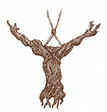
- Gwyrae
- The old religion of the human folk of Dolmenwood, before the arrival of the Pluritine Church (around 1,200 years ago) largely swept it away. Gwyrae is an Old Woldish word meaning “sacred glade.”
- Deities: A pantheon consisting of dozens of deities—called Wood Gods—of greater or lesser importance. They are regarded as manifestations of the spirit of Dolmenwood. In modern times, the Green Man—god of feast, ale, revelry, and hunting—is the only Wood God that remains prominent in folkloric memory.
- Origin: Lost to time.
- Cosmology: Remnants of Gwyrae mythology can be found in local folk belief in Dolmenwood. For example, locals still speak of a “world tree” on which all known realms of existence are placed, with Fairy as the tree’s root. Belief in reincarnation into plants or animals also lingers in folklore.
- Tenets: Lost to time.
- Practices: A number of folk practices in Dolmenwood can perhaps be traced back to Gwyrae: for example, the belief in a state of merry inebriation as a means of communion with greater powers.
- Holy Symbols: The symbol of the Green Man—a cruciform oak—can still be spied carved on old buildings or in graveyards that were appropriated by the Pluritine Church. In ancient times, adherents would wear cruciform or Y-shaped pendants of oak wood or root, but such symbols are seldom seen in the present day.
- Holy Texts: None known.
- Membership: It is said that the witches of Dolmenwood still worship the old gods in secret.
- Relationships: The Pluritine Church suppresses any remnants of Gwyrae. Otherwise, as a virtually dead religion, it has little contact with other faiths or folk.
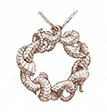
- Aud Frengd Hlerr
- The system of ancestor worship practiced among breggles. The name roughly translates as “praising the ancestors.”
- Deities: None. A multitude of ancestors are venerated, ranging from personal family members to great heroes of myth. The semi-mythical ancestor Hraigl is commonly revered, as mother of the longhorn noble houses.
- Origin: The practice of revering ancestors originates in the Passions of Ghrygaile—the tale of an ancient breggle warrior-chieftain who attributed his glory in battle to the aid of his ancestors, who fought by his side.
- Cosmology: Aud frengd Hlerr teaches that the world (this includes Fairy) is a testing ground. Individuals who prosper and honour their families gather in an afterlife of eternal feasting, along with their ancestors. Those who lead craven or spiritless lives enter a dismal realm of torment where their souls are annihilated by gnawing worms.
- Tenets: Honouring and furthering the position of ones family is utmost. Personal misdeeds can be redeemed by sufficient propitiation of the ancestors.
- Practices: Daily prayer to ancestors. Occasional sacrifices of valuables to ancestors. Pilgrimages to the graves of venerated ancestors.
- Holy Symbols: A ring of horns, often those of honoured ancestors.
- Holy Texts: The Hlerrllaindr—a set of books recounting the deeds of the most esteemed breggles.
- Membership: Most breggles practice Aud frengd Hlerr. There is no formal priesthood.
- Relationships: Breggles regard Aud frengd Hlerr as a philosophy of living, rather than a religion per se. It is not contradictory to also follow another religion, for example the Pluritine Church. The cosmology of Aud frengd Hlerr is broadly compatible with that of the Church.
Cults of the Nag-Lord
According to rumour, cults venerating the wicked Nag-Lord have begun to spring up in the wild places of Dolmenwood.
It is said that crookhorns, monsters, and even corrupted humans gather to worship the twisted King of the Wood and further his evil plans.

- Mogba
- The traditional religious practices of the mosslings of Dolmenwood, called Mogba in their own language (meaning something like “holy decay”).
- Deities: A multitude of deities of the deep forest and fecund underworld, too numerous to list in full. Each settlement has its own local deity, and many homes have their own god of the cauldron, trough, or compost heap. All are regarded as inhabiting the mortal world as divine siblings, part of a pantheon. Some of the most widely known deities are Mbombre (the clay god), Blosquom (fungal god of the village of Orbswallow), and Splobgra (the worm god).
- Origin: Mogba goes back to the unrecorded mists of time in Dolmenwood. Mossling mythology does not speak of a founder of the religion.
- Cosmology: Visions sent by the Mogba deities reveal that the world sits atop a cosmic puffball on the back of a toad named Hwogra. At the end of time, the puffball will explode, releasing the spores of the next cosmic cycle.
- Tenets: The cycles of nature are sacrosanct, especially those around ageing, death, and decay into the soil. Individuals are but temporary manifestations of the whims of the soil. The unfathomable mystery of life is to be savoured.
- Practices: Psychedelic communion with the Mogba deities. Questing to consult with mould oracles. Fertilising sacred plants with the compost of beloved ancestors.
- Holy Symbols: A toadstool with one or more eyes.
- Holy Texts: The evolving body of myths and legends known as Hwogm is primarily passed down orally, but the mould oracles do maintain written copies of various vintages.
- Membership: Mould oracles act as hermit-priests and spiritual guides. Otherwise, there is no formal religious structure.
- Relationships: Mogba is virtually unknown to other Kindreds and the religion has nothing to say on the subject of the religions of other folk.
Carcass Crawler Zine Gods

Austerus
The Shining One
Deity of redemption and holy light, formerly the fiendish deity of searing radiance, now turned to Order. Seeks to bring all of humanity under one rule.
Depiction: A tall androgyne, with bronze skin, golden eyes, and feathered wings of silver. Crowned with a spherical halo of golden light, wields a flaming sword.
Domain: Phandyne, the golden plains of crystalline radiance.
Alignment: Lawful.
Worshippers
Cults of Austerus seek to construct a gold-clad pyramid-temple in every settlement in the known world, offering redemption to the wicked and balm to the wretched. They ultimately aim to destroy all fiends and to absorb other religions by incorporating their myths and presenting their deities as aspects or servitors of Austerus.
Alignment: Lawful or Neutral.
Holy symbol: Rays of light emanating from a pristinely faceted diamond.
Holy garb: Pure white robes and a golden cape (15gp). Upon gaining the ability to cast 1st level spells, a worshipper may wear a veil of quartz tears (50gp). Upon gaining the ability to cast 3rd level spells, a worshipper may wear a platinum halo that magically hovers above their head (250gp).
Prayer: Worshippers of Austerus can only pray for spells in daylight or within a circle of blessed candles.
Strictures: Worshippers of Austerus must make the sign of the halo and recite holy psalms in the presence of other religions.
Alternative Spells
See Carcass Crawler Cleric Spells
- Order: 2nd level, replaces speak with animals.
- Halo of protection: 3rd level, replaces growth of animal.
- Searing radiance: 4th level, replaces sticks to snakes.
- Redemption: 5th level, replaces insect plague.
Marks of Servitude
When a worshipper of Austerus gains the ability to cast spells of a certain level, they also gain an associated trait:
- 1st level spells: White streak in hair.
- 2nd level spells: Clear, unblemished skin.
- 3rd level spells: Lustrous, silver-white hair.
- 4th level spells: Gold irises.
- 5th level spells: Heart emanates a warm, golden glow visible through skin.

Klath-Karnath
The Lady of Troubles
Goddess of insane danger, perils, and risk. Revels in seeing mortals overcome impossible odds, and so endlessly creates them.
epiction: A four-armed giantess with blood-red skin and twin lion heads that bite at each other. Her upper arms hold a flail and a wavy-bladed sword, the lower arms strangle a writhing serpent.
Domain: Karnath, an ever-changing realm of roiling storms and fiery cataclysms.
Alignment: Chaotic.
Worshippers
Cults of Klath-Karnath seek to strengthen themselves by facing adversity. Their goddess goads them to seek out the most dangerous dungeons and strip them of their treasures, then hoard the wealth in temples founded in perilous locations.
Alignment: Neutral or Chaotic.
Holy symbol: A bronze fist.
Holy garb: A leather snake bracelet (5gp). Upon gaining the ability to cast 1st level spells, a worshipper may wear a bejewelled snakeskin choker (100gp or more). Upon gaining the ability to cast 3rd level spells, a worshipper may wear a lion-skin cape (100gp).
Prayer: When praying for their spells, worshippers of Klath-Karnath must declare the dangerous activities they will embark on that day. Failing to uphold this promise could lead to deity disfavour.
Strictures: Worshippers of Klath-Karnath must invoke her name before doing something potentially fatal.
Alternative Spells
See Carcass Crawler Cleric Spells
- Tempt fate: 1st level, replaces purify food and water.
- Bless the foolhardy: 2nd level, replaces bless.
- Defy death: 3rd level, replaces locate object.
- Enrage: 4th level, replaces speak with plants.
Marks of Servitude
When a worshipper of Klath-Karnath gains the ability to cast spells of a certain level, they also gain an associated trait:
- 1st level spells: Always fidgeting.
- 2nd level spells: Red irises.
- 3rd level spells: Red, serpentine tattoos appear on limbs.
- 4th level spells: Claw-mark scars appear on both cheeks. 5th level spells: Bulging veins on the neck and head.

The Black Alderman
The Smiling God
Grimacing god of skulls, dentistry, and organ dirges, the Black Alderman drives worshippers to collect and tend to myriad skulls on his behalf.
Depiction: A skeleton in kingly robes of midnight black trimmed with black fur. Wears a black iron crown and a necklace of yellow skulls. The Black Alderman’s own skull is pristine white and always smiling.
Domain: Cromlech, an endless half-buried mausoleum.
Alignment: Neutral (favours non-reversed spells).
Worshippers
Cults of the Black Alderman seek out the skulls of rare monsters and influential figures to preserve in their temples. Some cultists are taught the healing arts to better care for the skulls of the living; known as Bonesmiths, these cultists work as travelling dentists and bone-setters.
Alignment: Lawful or Neutral.
Holy symbol: A skull made of silver or ivory.
Holy garb: A mask carved from a human skull (10gp). Upon gaining the ability to cast 1st level spells, a worshipper may wear black linen robes with silver trim (35gp). Upon gaining the ability to cast 3rd level spells, a worshipper may wear a necklace of ivory prayer beads, each carved into the shape of a skull (200gp).
Prayer: Worshippers of the Black Alderman must play a sacred song on an instrument made of bone to pray for their spells.
Strictures: Worshippers of the Black Alderman must collect a tooth from defeated foes. For particularly worthy foes, they must collect the whole skull.
Alternative Spells
See Carcass Crawler Cleric Spells
- Skull speech: 1st level, replaces purify food and water.
- Skull sentry: 2nd level, replaces speak with animals.
- Danse macabre: 4th level, replaces speak with plants.
- Control skull: 5th level, replaces create food.
Marks of Servitude
When a worshipper of the Black Alderman gains the ability to cast spells of a certain level, they also gain an associated trait:
- 1st level spells: Pallid complexion.
- 2nd level spells: Sunken, skull-like facial features.
- 3rd level spells: All hair on the head falls out.
- 4th level spells: Withered muscles and taught skin (does not affect ability scores).
- 5th level spells: Solid black eyes.
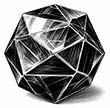
Moumb
The Hidden Lord
God of the weird deeps of the Underworld, where the logic of the surface world recedes.
Depiction: A corpulent, purple-skinned man with a single, great, yellow eye and a ring of horns around his crown. Moumb wields a mighty mace of black stone and wears a cloak of burning chains.
Domain: Urbald, vast obsidian fortress carved in the Underworld’s fundament.
Alignment: Neutral (favours reversed spells).
Worshippers
Cults of Moumb seek to found subterranean temples and kingdoms honouring Moumb, make contact with obscure Underworld civilisations, and unearth the secrets of the deep places of the world.
Alignment: Any.
Holy symbol: A dodecahedron or icosahedron of lead, obsidian, or hematite.
Holy garb: A red cloak interwoven with iron chains (5gp). Upon gaining the ability to cast 1st level spells, a worshipper may wear a helm inlaid with a golden eye (50gp). Upon gaining the ability to cast 3rd level spells, a worshipper may wear a crown of ram horns (50gp). Prayer: Worshippers of Moumb can only pray for spells underground, in pitch darkness, or blindfolded.
Strictures: Worshippers of Moumb may only speak his name underground. In the surface world, they often use the epithet “the Hidden Lord”.
Alternative Spells
See Carcass Crawler Cleric Spells
- Deep vision: 1st level, replaces light.
- Secret room: 3rd level, replaces continual light.
- Find exit: 4th level, replaces sticks to snakes.
- Pass-wall: 5th level, replaces insect plague.
Marks of Servitude
When a worshipper of Moumb gains the ability to cast spells of a certain level, they also gain an associated trait:
- 1st level spells: Ragged black fingernails.
- 2nd level spells: Eyes reflect light in the dark like a cat’s.
- 3rd level spells: Violet-hued skin.
- 4th level spells: Presence causes light sources to flicker and waver.
- 5th level spells: Shadow appears larger, monstrous.
Anganach (Old Gods)

- Anu-Eya
- Greater God of the Archaians, Archaian Magic, Archomancy, and Knowledge
- Alignment: Neutral Evil
- Symbol: A crowned, sneering face
- Anu-Eya is an ancient deity from the time before time. He long predates the arrival of demi-humans and humans to the Northern Reaches. He is a greater god and creator of the Archaians. Anu-Eya gave life to his people and bestowed many gifts upon them. These included innate magical abilities and knowledge of the cosmos. When the Archons of the Trium sought to ascend to godhood and challenge him, Anu-Eya wrought destruction upon the great city of Archaia. His wrath cracked the earth, swallowed the city, and destroyed his people… or so he thought. The Archons survived and, with the help of Impurax, have been plotting their revenge. Anu-Eya is tall, lithe, with slightly pointed ears. He is often depicted wearing a large round headdress and loincloth. His arms, neck, fingers, ankles and toes are decorated in gold and platinum jewelry. He is a vengeful god.
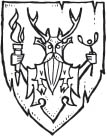
- Herne the Hunter (Venator Cervus)
- AKA the Horned God
- Demi-God of the Hunt, Swamps and Forests
- Alignment: Lawful Neutral (Good)
- Symbol: An antlered human face or stag head
- Herne is one of the Anganach or Ancient Ones. The worship of St. Ygg has replaced Herne in recent years, but there are those who still pray and offer sacrifices to him. Herne is the god of the northern woodlands, swamps, and the creatures that inhabit them. He prefers to take the form of a deer, or a man with an antlered deer’s head. Herne chooses a favoured son, a druid, barbarian, ranger, or warrior, to serve him as the Guardian of the Forest. Some believe Herne is the son of Silvanus. The people of the region often use the phrase “Herne protect us” or “Herne protect you” as a toast or when parting company.
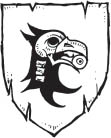
- Impurax (Impuratus)
- God of Decay, Corruption, and Pestilence
- Alignment: Neutral Evil
- Symbol: A rotting raven’s head
- Little is known about the ancient deity Impurax. It is believed his faithful consisted of a secret order of corrupt druids. These witches and warlocks lived in the Barrowmoor and possessed a strange power over select creatures and monsters, but little has been heard of his faith for decades. Impurax is the natural enemy of Silvanus and Herne the Hunter. Folk tales say Herne’s favoured son died decades ago in a great battle against the followers of Impurax. Impurax aligns himself with Nergal, historically.

- Valdghar (Sangdro-Libidus)
- Demi-God of the Valdghardt, Nomadic barbarians, Bloodlust
- Alignment: Chaotic Neutral
- Symbol: A woolly mammoth
- Sages are unclear as to whether Valdghar is a distinct demi-god, or an aspect of Crom acclimatized to northern warrior tribes and barbarians. Valdghar appears as a brawny barbarian with black hair and cold blue eyes. He wields a broadbladed battle-axe and rides a woolly mammoth into combat. He values strength, courage, and feats of arms. Sages believe he instills his bravest and most loyal warriors with an inspiring bloodlust. The barbarian tribes of the Northern Reaches worship him, and his totems, exclusively.
- The Valdghardt barbarians consist of a number of small distinct tribes, such as Cougar Claw, Black Wolf, Green Griffon, Three-Eyed Raven, Horned Stag, Great Moose, Blood Moon, and others. They have their own dialect, totems, worldviews, and spiritual beliefs. The tribes are fiercely independent and will occasionally ally themselves with neighbouring clans for security or war.
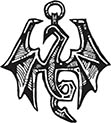
- Vol (Draco Frigidus)
- God of Evil Dragons, Dracoliches, Dragon Cults, and Dragonmen
- Alignment: Lawful Evil
- Symbol: A rampant dragon
- Vol is the god of evil dragons and their followers. He appears either as a draconianlooking humanoid or as great white dragon. Followers of Vol, called the Volsectum Draconis, are humans who support the machinations of evil dragons and their transition into undeath as dracoliches. Vol blesses his closest and most devout followers with transmutation into dragonmen, although very little is known about this process. Vol is dedicated to the destruction of human civilization in the Northern Reaches and, specifically, the Free City of Threshold.
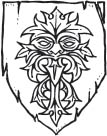
- Silvanus (Viridis Voltus)
- AKA Green Man
- God of Nature and the Balance
- Alignment: Neutral
- Symbol: A face carved of leaves
- As one of the Anganach, Silvanus’ faith arrived with the first human settlements. His religion has been largely, but not exclusively, replaced by the worship of St. Ygg. Silvanus, also called Green Man, oversees the balance in nature: law and chaos, light and dark, growth and decay, life and death. For generations the rangers and druids looked to Silvanus for guidance and protection. He is also considered by some to oversee the spheres of rebirth and fertility. Faces of Silvanus have been carved into trees and rocks for centuries in the region. Tales say good fortune befalls those who chance upon his face in the wild.
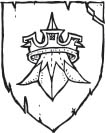
- Crom (Cromm Cruach)
- God of Strength and Battle
- Alignment: Chaotic Good
- Symbol: A silver crown over a white capped mountain
- An Ancient One, Crom is worshipped largely by fighters, rangers, barbarians, and clerics. Due to the constant threat of monsters and monstrous humanoids from the Barrowmoor and the surrounding forests, Crom’s faith among warriors and mercenaries has remained steady in comparison to that of Silvanus and Herne. The clerics of Crom seek to advance their faith through strength of arms and feats of daring in battle.
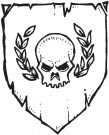
- Nergal (Ossum Mortis)
- Greater God of Death, Undead, and the Underworld
- (Presumed Dead)
- Alignment: Chaotic Evil
- Symbol: A single white skull
- One of the Anganach, Nergal once ruled the Underworld and the spheres of Death and the Undead. He was deposed and presumably destroyed by his sons Orcus and Set. Prior to his presumed death, Nergal ensured his followers interred his most powerful artifact, The Tablet of Chaos, deep in Barrowmaze. Over time The Tablet has called the dead to rise. Whether The Tablet retains Nergal’s last remaining essence, or whether he still exists, is unknown.
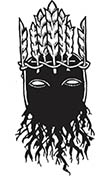
- Malachai (Frumentus)
- Demi-God of Agriculture (Corn) and the Harvest
- Alignment: Neutral Evil
- Symbol: A black face crowned with corn stalks
- Malachai, or He-Who-Walks-Between- the-Stalks, is one of the Ancient Gods or Anganach. His followers believe that they must make ritual blood sacrifices to appease Malachai or he would fail to provide them with a bountiful harvest. His symbol is a sneering black face crowned with corn stalks. The arrival of St. Ygg to Middenmark has all but extinguished Malachai’s faith, although some peasant folk still utter his name in hushed tones. Some believe he may be connected to the sphere of fertility.

- Zuul (Elementus)
- Demi-God of Chaotic Elements
- Alignment: Chaotic Evil
- Symbol: The four elements
- Zuul, also called The Destructor, embodies the chaotic and deadly nature of the four elements. He appears as a winged demon with four arms. When the land cracks open and swallows the earth, or a harsh winter culls the living, or extreme heat dries rivers, or tornados destroy villages, Zuul is said to be displeased. The Elemental God is uncaring, uncompromising, and cruel. Zuul is one of the Ancient Ones, or Anganach, and the status of his cult is unknown.
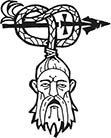
- Syldina (Timereach)
- Demi-God (Heroine) of the Northern Wilderness
- Alignment: Neutral Good
- Symbol: Spear with severed head of a man
- Syldina appears as a tall, redheaded shield-maiden armed with a spear and a stoic gaze. Like Herne the Hunter, Syldina was a worshipper and the chosen of Silvanus in life. Upon sacrificing herself in a great battle against overwhelming odds, she was called upon to serve the Green Man in the afterlife. She champions the Northern Wilderness and its peoples. Archers, and those who hunt and range across the far forests of the Northern Reaches, also worship Syldina. Her symbol is a spear with feathers or the severed head of a man attached at the base.
Futurus (New Gods)
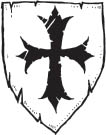
- St. Ygg (Veridicus)
- God of Righteousness
- Alignment: Lawful Good
- Symbol: A red cross on a white field
- St. Ygg is the lawful deity of righteousness and light. St. Ygg believes in the highest moral standards. He is self-righteous and possesses an indignant temper with those who fail to see the just nature of his actions. St. Ygg is the most influential of the “civilized” or Futurus deities in the region. His clerics have been aggressive to convert the followers of Herne and Silvanus to the faith. St. Ygg demands his followers destroy undead as he views them as an abomination of the highest order. His followers include clerics and a rare group of paladins known as the Order of the Crimson Cross. Paladins are very rare in the duchy but are common in the more civilized kingdoms far to the east.
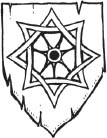
- Arcantryl (Magus)
- Goddess of Magic
- Alignment: Lawful Neutral
- Symbol: A star within a star
- Arcantryl is one of the new gods or Futurus. Arcantryl derives her power from knowledge of the laws of the universe and existence. She believes in understanding the structure of the cosmos and harnessing (and bending) that knowledge to express magical energies. Instead of branching out immediately to the smaller villages of Helix and Bogtown, the clerics of Arcantryl have focused on developing followers at Ironguard Motte where they have established a small shrine. A large stone temple is currently under construction and will facilitate the instruction of both clerics and magic-users when complete.
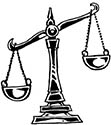
- Denara (Pecuna)
- Demi-Goddess of Wealth, Bureaucracy, Trade
- Alignment: Lawful Neutral
- Symbol: Unbalanced scales of trade
- Denara’s sphere includes the areas of trade, wealth, and administration. Her followers include entrepreneurs, traders, merchants, bureaucrats, and the wealthy. Denara, a deity of the Futurus, believes in the judicious treatment of wealth, the hierarchical distribution of capital, and lawful organization of trade and trade agreements.
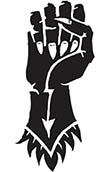
- Imperiosa (Imperator)
- Goddess of Tyranny, Domination, Destruction
- Alignment: Lawful Evil
- Symbol: A clawed black fist
- Imperiosa, The Conqueror, appears most often as a beautiful blackskinned human warrior. Her symbol is a defiant, clawed black fist, which represents the spheres of domination and destruction. Her church is militaristic and encourages conflict and hate. They seek to identify weakness and destroy it, both within their faith and without. She is the patron of all those who seek military conflict, destruction, and domination. Her motto is “By our swords, we rule.”
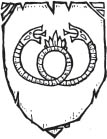
- Set (Jakuul Mortis)
- God of Serpents, Death, and the Underworld
- Alignment: Lawful Evil
- Symbol: Two snake heads facing each other
- Set and his brother Orcus deposed their father Nergal for control of the underworld. After completing the task they turned on each other to establish complete control over their father’s spheres of power. A war for control of the underworld began. A stalemate ensued with each son controlling a portion of Nergal’s power. In order to tip the scales, Set gathered his necromancers and commanded them to find the Tablet of Chaos. Followers of Set are committed to the destruction of Orcus and his faithful. Set and Orcus currently share the spheres of Death and the Underworld.
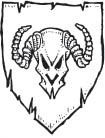
- Orcus (Malum Mortis)
- God of the Undead, Death, and the Underworld
- Alignment: Chaotic Evil
- Symbol: A white ram head on a black field
- Orcus and his brother Set combined their power to overthrow Nergal. A civil war resulted with both brothers possessing a portion of their father’s power. Orcus, aware of the Tablet of Chaos, knew that whoever possessed the artifact could tip the balance of power and claim control of the underworld. The acolytes of Orcus are committed to annihilation of Set and his followers. Set and Orcus currently share the spheres of Death and the Underworld.

- Dogma (Illuminatus)
- God of Knowledge, Scholars, Learning
- Alignment: Lawful Neutral
- Symbol: A sunrise within a book
- Dogma appears as an old, thin, grey-bearded man in a monk’s habit carrying a great book under his arm. The Learned One is the patron of those who seek knowledge and those who create new knowledge, such as scholars, inventors, alchemists, and mages. Dogma embodies the notion of enlightenment through higher education.
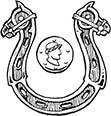
- Fortuna (Fortunatus)
- Demi-Goddess of Luck, Gamblers, Adventurers
- Alignment: Chaotic Good and Chaotic Neutral
- Symbol: A coin in the center of a horseshoe
- Fortuna is the patron of luck, gambling, and adventuring. She is sometimes referred to as Lady Luck. Fortuna is known as being flighty, moody, capricious, and temperamental. Her (notoriously brief) favour often relates specifically to the acquisition of wealth (such as gambling or adventuring). Adventurers often pray to her if they face life-or-death circumstances. Fortuna appears as a beautiful, golden-haired woman. Her symbol is an upraised horseshoe with a gold coin in the center. Lady Luck is allied with Denara.
Dwarven Gods
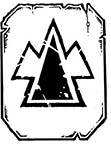
- Dhurindain (Kibil-Khazad)
- Dwarven Demi-God of Mountains
- Alignment: Neutral (Good)
- Symbol: Three mountains
- Dhurindain, the demi-god of the mountains and their secrets, serves as the patron of dwarven miners, architects, and craftsmen. Miners and clerics of the Secret-Keeper often claim they found the tendrils of Dhurindain’s beard when they happen upon a vein of gold or mithril deep in the earth. Followers of Dhurindain believe earth and stone are sacred. They believe that carelessness with the wealth of the earth will anger Dhurindain. Unlike Geddinthor, Dhurindain never speaks directly to his followers. Instead, the Secret-Keeper communicates through signs and symbols hidden in the earth and stone that require his followers’ active observation to decipher. The dwarven people attribute their innate stone-sense to the blessing of Dhurindain. Clerics of the Secret-Keeper typically wield hammers as their primary weapon
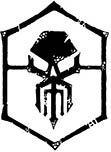
- Dworgrim (Narag-Khazad)
- God of Gray Dwarves
- Alignment: Lawful Evil
- Symbol: Bearded skull
- Dworgrim, the god of the duergar, was one of the first great warriors of Gundgathol. Also called the Gray One or the Outcast, Dworgrim offered no quarter in battle, kept slaves (forbidden in dwarven society), and advocated a xenophobic ethnocentrism among the dwarven people. Upon his death, his descendants formed a cult based on his ideals and worshipped him in secret.
- In the blackness of the underdark, the exiles of House Stoneborn, forsaken and cursed by Thaneduhr, whispered prayers to Dworgrim – and he answered. Dworgrim is the sole deity of the duergar and rules their society by rewarding cruelty and malice. He forbids the worship of familial ancestors.
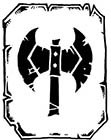
- Geddinthor (Baruk-Khazad)
- Dwarven Demi-God of War
- Alignment: Neutral Good
- Symbol: Battle-axe
- Geddinthor, the Lord of Battle, is the demi-god of dwarven warriors. All dwarven warriors know the stories and sagas of Geddinthor’s courage and bravery. Dwarven sages believe it was Geddinthor who taught the dwarves to defeat mighty frost giants and the tactics necessary to stand against overwhelming orc hordes with fewer numbers. It is said Geddinthor wields a double-bladed battle axe and sings praises to Thaneduhr as he wades into combat. Geddinthor prizes weapon skill, training, and valor amongst his followers. Dwarven clerics of Geddinthor may use the hand or battle axe.
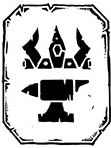
- Thaneduhr (Uzbad-Khazad)
- Dwarven God of Creation
- Alignment: Lawful Good
- Symbol: A crown over an anvil
- Thaneduhr, the All-Father, is the creator of the dwarven race. The dwarves believe he shaped the first seven noble families from stone, deep in the Eternal Mountains with a famous relic - the Hammer of Dwarvish Lords. The All-Father taught the dwarves the skills of mining, forgecraft, architecture, and warfare. Thaneduhr’s symbol is a crown over an anvil, representing his status as the king of dwarves and the forge as their birthplace. The demi-gods Geddinthor (War) and Dhurindain (Mountains) serve Thaneduhr. Clerics of the All- Father wield hammers as their primary melee weapon. Thaneduhr is associated with the number seven.
Other Gods

- Baracus (Irratus)
- Demi-God of Wrestling and Athletics
- Alignment: Chaotic Good
- Symbol: Two tattooed arms wrestling
- Baracus appears as a large, very muscular athletic warrior with a jolly smile. He is the demi-god of warrior-athletes, especially wrestlers. Warriors of all types and those who wish to hone their bodies through personal discipline and exercise worship Baracus. He is a gregarious and boisterous figure who lives large, drinks hard, and laughs harder. Baracus is primarily worshipped in the northernmost expanses of the Northern Reaches where feats of strength are common and wrestling is the sport of choice. He is closely associated with Crom.
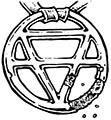
- Bormanus (Salus)
- Demi-God of Salt and Minerals
- Alignment: Neutral
- Symbol: The symbol of earth inside the symbol of salt
- Bormanus appears as a roughhewn golem made of salt with expressionless blue glowing eyes. His worshippers include prospectors, miners, diggers, panhandlers, and those in related mining industries. Often his followers will carve small effigies from salt and leave them at his shrines and places of worship. The common people in Thatchum and Woodvale hold festivals of salt in his name.
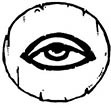
- Odin One-Eye
- God of Wisdom and Warfare
- Alignment: Neutral Good
- Symbol: An eye
- The cult of Odin is little known among the people of the Northern Reaches. Sages say Odin gouged out his eye and offered it as a sacrifice in return for cosmic knowledge and wisdom. Odin has many names, and, subject to the people who worship him, is called Woden, Ofnir, or Grimnir
- Odin possesses a massive great spear called Gungnir and lives in his great hall in Valhalla. He is sometimes accompanied by his two ravens Hugin and Munin and rides through the stars on his eight-legged steed Sleipner.
- Under Skuld the Cleric, a tribe of cyclopsmen in Hamelet worship Odin exclusively as their patron deity. All clerics of Odin sacrifice an eye as part of their acceptance into the faith. Some say Odin gifts his clerics with new forms of sight (or insight) in return for the sacrifice. Odin is associated with the number nine.